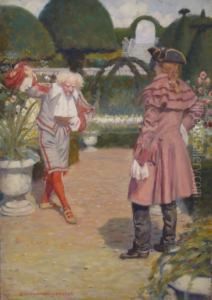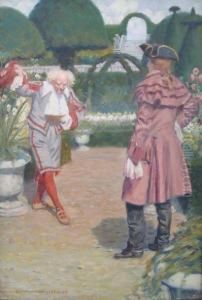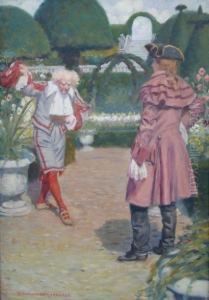Simon Harmon Vedder Paintings
Simon Harmon Vedder was an American artist whose life spanned much of the 19th century, a period marked by significant cultural and artistic development in the United States. Born in 1806, Vedder emerged from a time when the young nation was still forming its identity, including its artistic expressions. While not as widely recognized as some of his contemporaries, Vedder contributed to the American art scene with his unique perspectives and techniques.
Vedder's early life is somewhat obscure, as detailed records of his upbringing and initial foray into the art world are scarce. However, it is known that he was active during a vibrant period in American art history, likely receiving training from more established artists of his time or through apprenticeships, a common practice. His work, which primarily consisted of landscapes and portraits, reflected the growing interest in capturing the essence of American life and the natural beauty of its landscapes.
Throughout his career, Vedder exhibited a keen interest in the American landscape, akin to the Hudson River School painters, though he never officially aligned with any particular art movement. His landscapes often depicted serene, pastoral scenes that highlighted the majesty and untamed beauty of the American wilderness. These works resonated with a public eager for representations of their country's landscapes, contributing to the burgeoning sense of American national identity.
In addition to landscapes, Vedder was known for his portraits, which captured the likenesses and personalities of his subjects with depth and sensitivity. His approach to portraiture was reflective of a broader trend in American art that sought to depict individuals with an emphasis on their character and status within the emerging fabric of American society.
Simon Harmon Vedder's contributions to American art, although perhaps not as celebrated as those of his peers, were nonetheless significant. His paintings offer a window into the evolving American aesthetic of his time and reflect the broader cultural currents of 19th-century America. Vedder passed away in 1879, leaving behind a body of work that, while it may not have garnered widespread fame, enriches our understanding of the period and its artistic output. His legacy is preserved in the collections of those who appreciate the depth and sincerity of his artistic vision.



